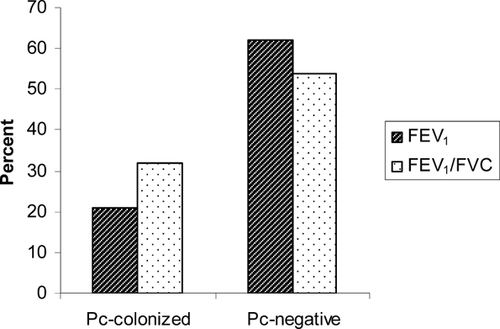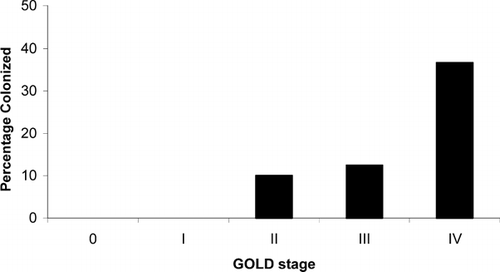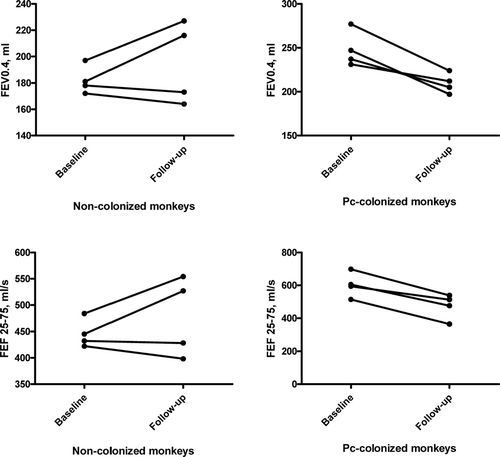Figures & data
Table 1 Evidence linking Pneumocystis colonization and COPD
Table 2 Summary of studies reporting prevalence of Pneumocystis colonization in COPD
Figure 1 Comparison of FEV1 and FEV1/FVC in Pneumocystis-colonized subjects and Pneumocystis negative. p = 0.006 for both comparisons. Abbreviations: FVC, forced vital capacity; FEV1, forced expiratory volume in 1 second, percent predicted.

Figure 2 Association of GOLD stage and prevalence of Pneumocystis colonization. Reproduced with permission from American Journal of Respiratory and Critical Care Medicine. Abbreviations: GOLD, Global Health Initiative on Obstructive Lung Disease.

Figure 3 Change in forced expiratory volumes and forced expiratory flow values for non-colonized monkeys from baseline (uninfected) to follow-up (SHIV-infected, Pneumocystis-negative) and for Pneumocystis-colonized monkeys from baseline (uninfected) to follow-up (SHIV-infected, Pneumocystis-colonized). Average follow-up of 8 months. * p = 0.02 for comparison of change in FEV0.4 and FEF25 − 75 in non-colonized versus Pneumocystis-colonized. Abbreviations: FEV0.4, forced expiratory volume during first 0.4 seconds; FEF25 − 75, forced expiratory flow over mid 50% of forced vital capacity; Pc, Pneumocystis.
